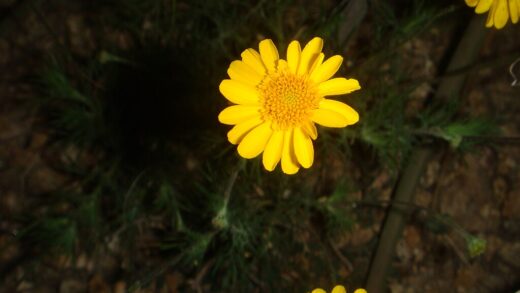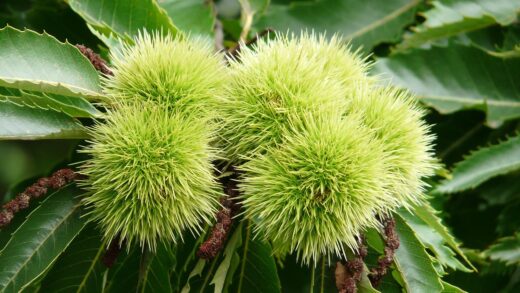The overwintering of the Abyssinian gladiolus

Ensuring the survival of the Abyssinian gladiolus through the winter months is a critical aspect of its cultivation, particularly in climates where temperatures drop below freezing. As a tender cormous perennial native to the warm regions of East Africa, it lacks the natural hardiness to withstand frozen ground. Therefore, the process of overwintering involves a series of deliberate and careful steps designed to protect the corm—the plant’s dormant life-support system—from the rigors of winter. This procedure is not merely about storage; it is an essential part of the plant’s annual cycle that guarantees its return the following year. Successful overwintering begins in the autumn garden with the correct timing for lifting the corms and concludes with providing the ideal storage conditions that keep them healthy and dormant until the warmth of spring signals the start of a new growing season. Mastering this process is the key to enjoying these elegant flowers as a permanent and cherished feature of your garden.
Timing the harvest of corms
The timing for lifting the corms of the Abyssinian gladiolus from the ground is a crucial decision that significantly impacts their long-term viability. This process should not be rushed; the corms need adequate time after flowering to replenish their energy stores for the next season. The foliage must be allowed to continue photosynthesizing, channeling energy back down into the developing new corm. The ideal time to harvest is after the leaves have naturally turned yellow and started to die back, but before the ground freezes solid. A light first frost is often a good indicator, as it will kill off the remaining foliage and signal that the plant has fully entered dormancy.
Waiting for the foliage to decline naturally is essential. Cutting back green, healthy leaves prematurely will severely weaken the corm, as it halts the vital process of energy storage. A corm that has not been properly “charged” will have a much lower chance of surviving the winter in storage and will likely produce a weak, non-flowering plant if it does survive. Patience in the autumn is rewarded with strong, healthy corms that are well-prepared for their winter rest. In most temperate climates, this lifting period typically falls between late October and mid-November.
To lift the corms, use a garden fork or spade, inserting it into the soil a good distance away from the base of the plant’s stem. This is to avoid accidentally piercing or damaging the corms, which lie several inches below the surface. Gently loosen the soil around the entire clump and then carefully lever the corms out of the ground. It is normal to find a cluster containing the new large corm, the shriveled old parent corm beneath it, and a collection of small cormels around the base.
Once the clump is out of the ground, gently shake off the loose soil. It is not necessary to wash the corms; in fact, this should be avoided as the excess moisture can promote rot. At this stage, you can trim the remaining stem and foliage down to about 5-10 centimeters. This short stem provides a convenient handle for moving the corms around during the initial drying and curing process. Proper and gentle handling at this stage is key to preventing wounds that could become entry points for disease.
More articles on this topic
The curing process explained
After the corms have been lifted from the garden, they must undergo a critical process known as curing. Curing is essentially a drying period that prepares the corms for their long winter dormancy. The primary purposes of this process are to allow the outer skin of the corm to dry and harden, which helps to prevent moisture loss during storage, and to allow any minor cuts or bruises sustained during lifting to heal over. This healing creates a protective callus that seals the corm off from fungal and bacterial pathogens that could cause rot in storage.
To cure the corms, spread them out in a single layer on a screen, in a shallow tray, or on newspaper. It is important that they are not piled on top of each other, as this would trap moisture and hinder air circulation. Place them in a warm, dry, and well-ventilated location that is protected from rain and frost. An airy garage, a dry utility room, or a covered porch are all suitable locations for this process. The ideal temperature for curing is around 18-21°C (65-70°F).
The curing process typically takes between two and three weeks. During this time, you will notice the remaining soil on the corms drying and becoming easier to remove. The old, shriveled mother corm at the base will become papery and will detach easily from the new, plump corm that has formed on top of it. The small cormels can also be separated at this time. This is the stage to clean up the corms, gently brushing off the remaining dry soil and removing the old corm and cormels for separate storage or disposal.
You will know the corms are fully cured when the outer skin feels dry and papery to the touch and the base where the old corm was attached is dry and calloused over. The corms should feel firm and solid, not at all spongy. This carefully managed drying process is arguably the most important step in ensuring the successful overwintering of your Abyssinian gladiolus. Rushing this stage or storing damp corms is the most common cause of storage failure due to rot.
More articles on this topic
Optimal storage conditions
Once the corms are fully cured, they are ready to be placed in their winter storage location. The goal of storage is to keep the corms in a dormant state, which means providing conditions that are cool, dark, and dry. The ideal temperature range for storing Abyssinian gladiolus corms is between 4°C and 10°C (40°F and 50°F). These temperatures are cool enough to prevent the corms from sprouting prematurely but warm enough to keep them from freezing. A frost-free shed, an unheated garage, or a cool basement are often perfect environments.
Good air circulation is absolutely vital during storage to prevent the buildup of moisture and the development of mold or rot. Never store the corms in airtight plastic containers or sealed bags. Instead, use materials that allow for airflow. Mesh bags (such as those used for onions), old nylon stockings, or open paper bags are excellent choices. You can hang these bags to ensure air can circulate all around the corms. Alternatively, you can lay the corms in a single layer in shallow cardboard boxes or wooden trays.
Some gardeners prefer to pack the corms in a loose, dry medium to provide extra insulation and to help absorb any ambient moisture. Materials like dry peat moss, sand, vermiculite, or even crumpled newspaper can be used for this purpose. Place a layer of the medium in the bottom of a box, arrange the corms on top so they are not touching, and then cover them with another layer of the medium. This method can also help to cushion the corms and prevent them from drying out too much over the long storage period.
It is a good practice to label your stored corms clearly, especially if you are storing different types of tender bulbs and corms. Include the name of the plant and the date they were stored. This helps to keep your collection organized and reminds you of what you have when it comes time to plan your spring planting. Proper labeling avoids confusion and ensures that each type of plant gets the specific care it needs.
Mid-winter inspection and care
The task of overwintering does not end once the corms are placed in storage. It is important to conduct periodic checks throughout the winter months to ensure they are remaining in good condition. Plan to inspect your stored corms at least once a month. This quick check can be the key to catching any potential problems early before they have a chance to spread and ruin your entire stock. During your inspection, you are primarily looking for two things: signs of rot and signs of excessive dehydration.
Gently handle each corm and check for any soft spots, mold, or signs of decay. If you find a corm that is becoming soft or has visible mold growth, it is crucial to remove it and discard it immediately. Fungal diseases can spread quickly from one corm to another in the close quarters of a storage container. Removing the affected corm protects the rest of your healthy stock. Do not be tempted to keep a corm that has started to rot, as it will not be viable for planting in the spring.
At the same time, check to see if the corms are becoming overly shriveled or desiccated. While some minor wrinkling is normal as the corm loses a small amount of moisture over the winter, excessive shriveling indicates that the storage environment is too dry or too warm. If the corms appear to be drying out too much, you can lightly mist the packing medium (if you are using one) with water or move them to a slightly cooler and more humid location. The goal is to find a balance where they stay dry enough to prevent rot but do not lose so much moisture that they become non-viable.
These regular checks also provide an opportunity to ensure that the corms are not beginning to sprout prematurely. If you notice early sprouting, it is a sign that the storage temperature is too warm. Move the corms to a cooler location to slow down this growth. By staying vigilant throughout the winter, you can address these issues as they arise and significantly increase the percentage of corms that successfully make it through to the spring planting season, ready for another year of growth.
📷 Flickr / Szerző: Stefano / Licence: CC BY-NC-SA 2.0



















